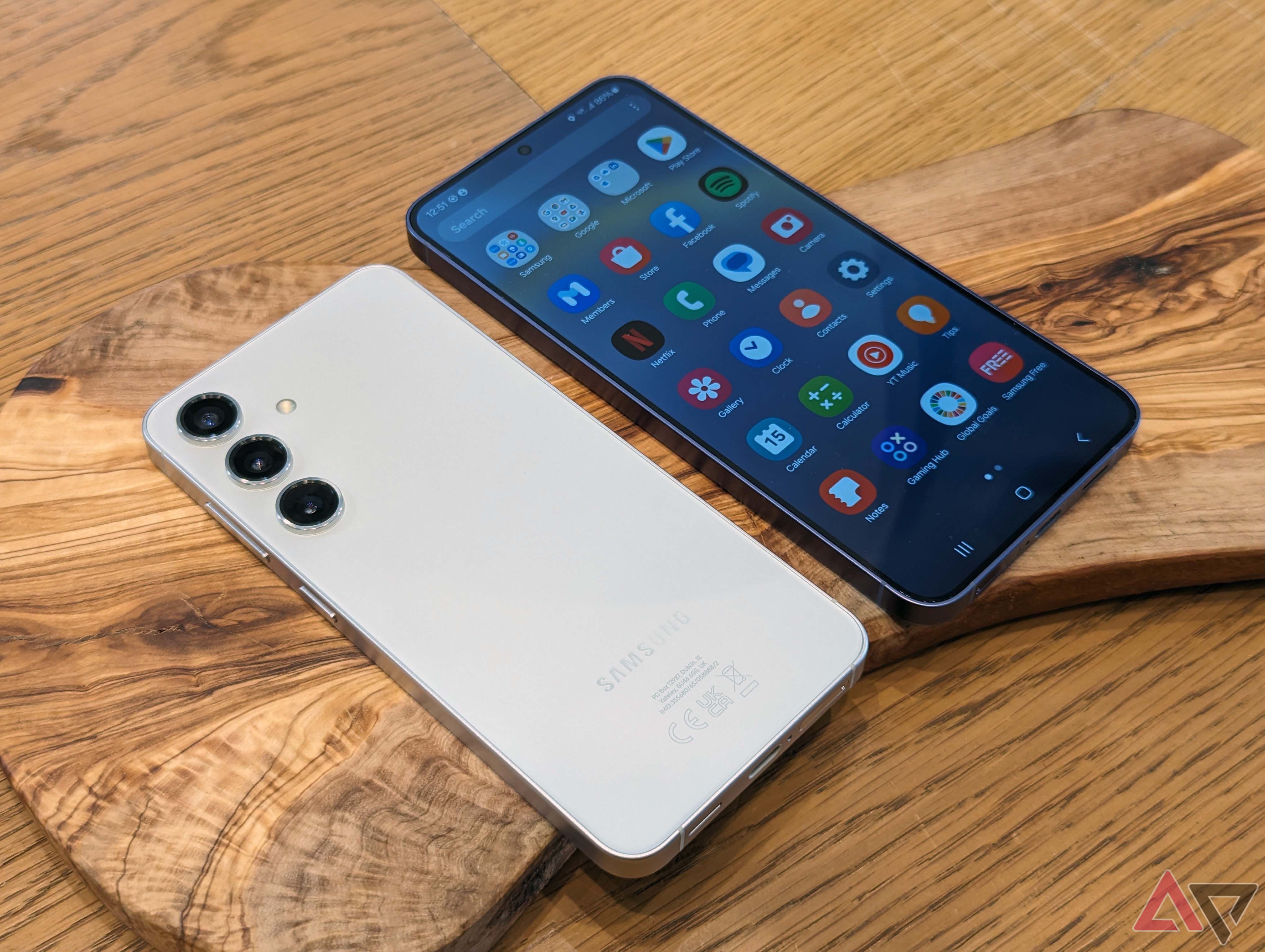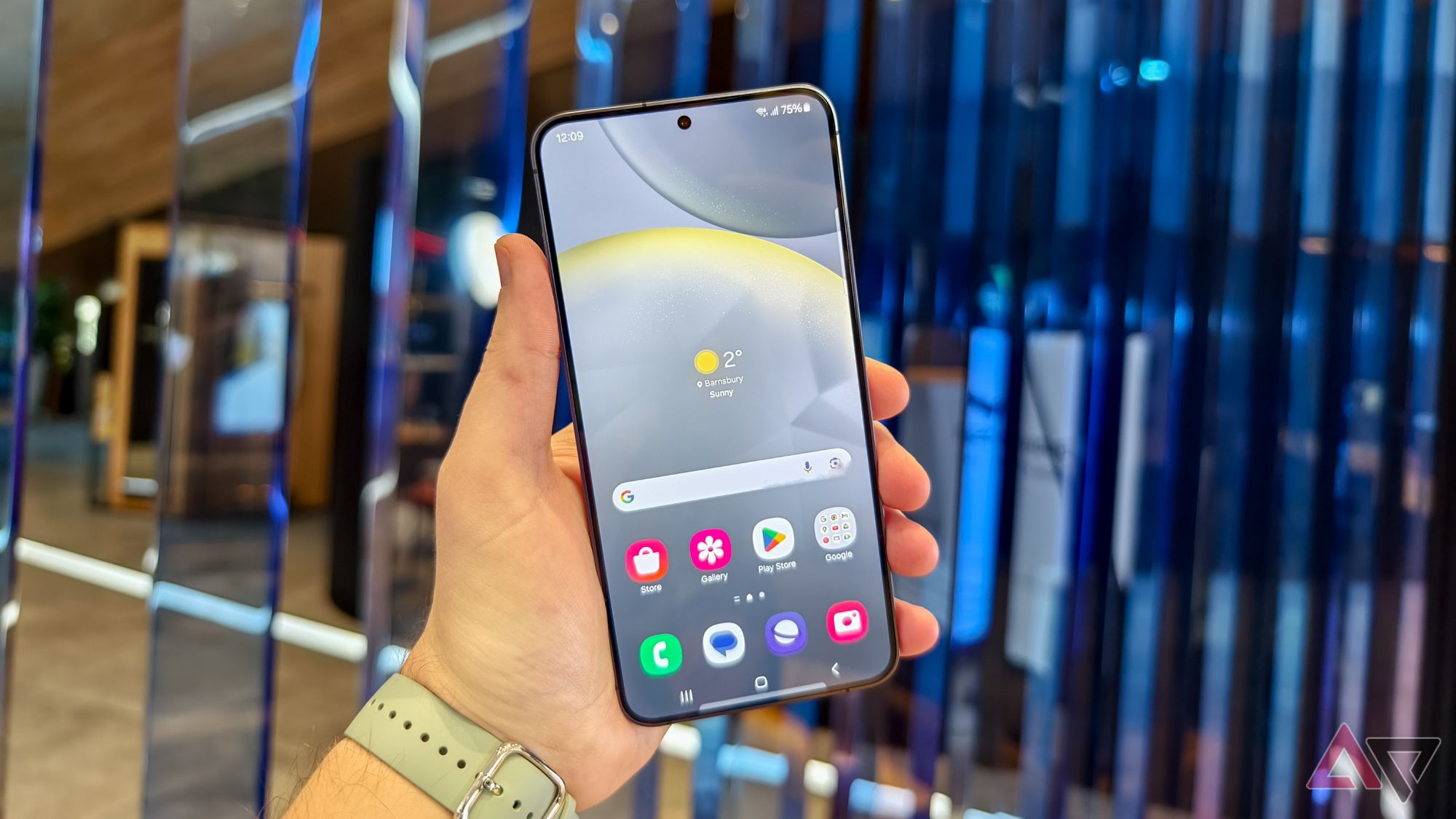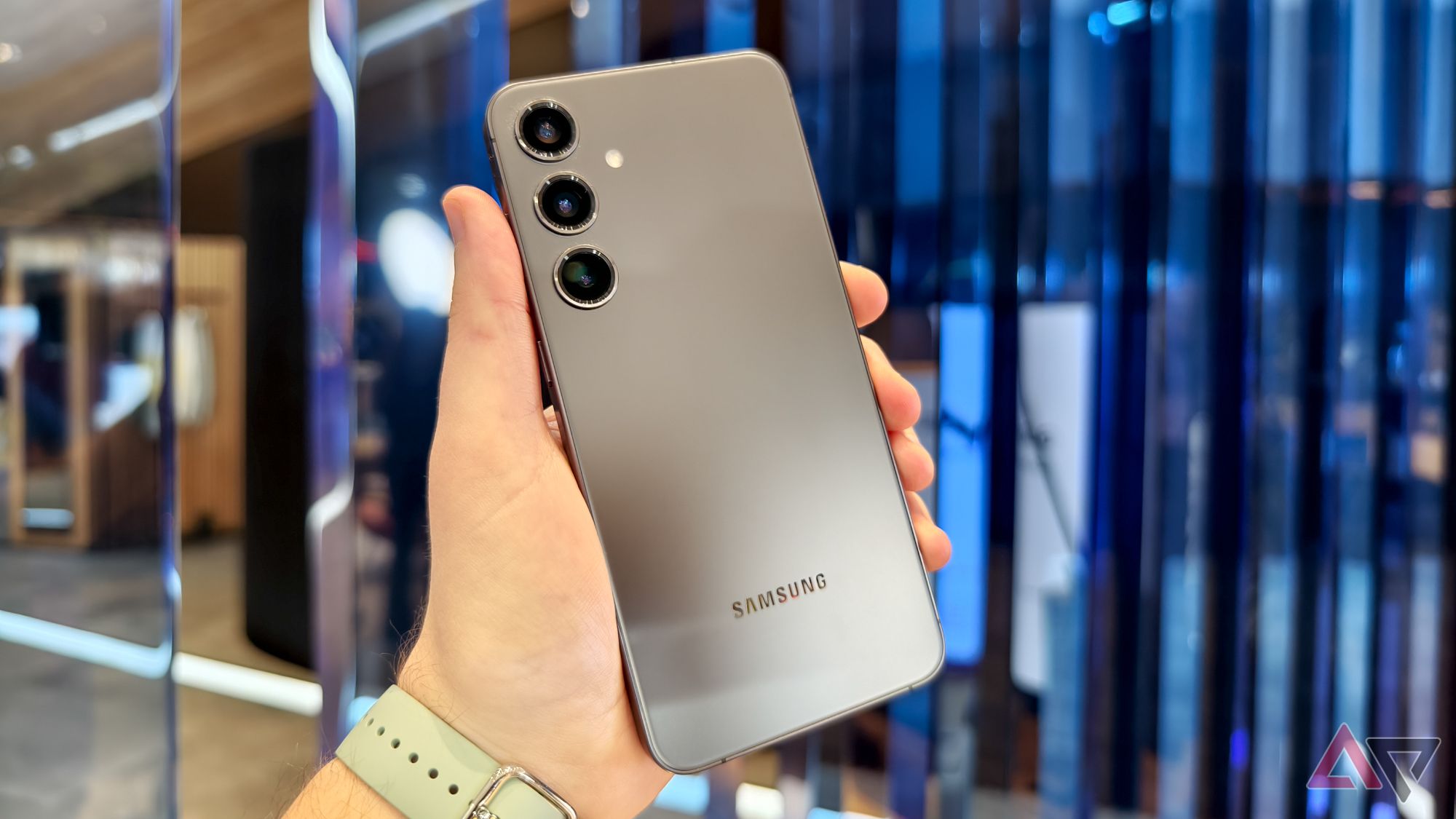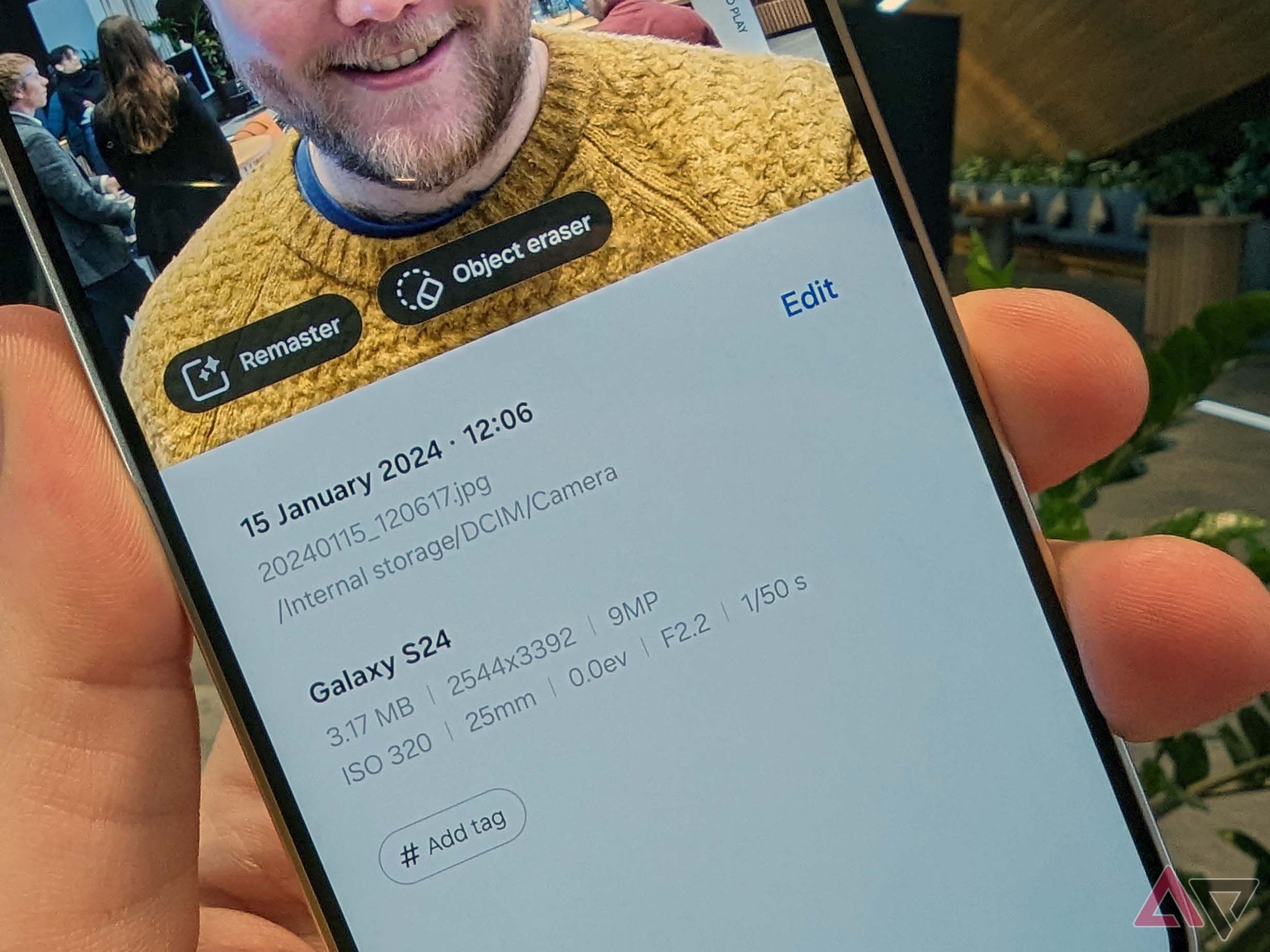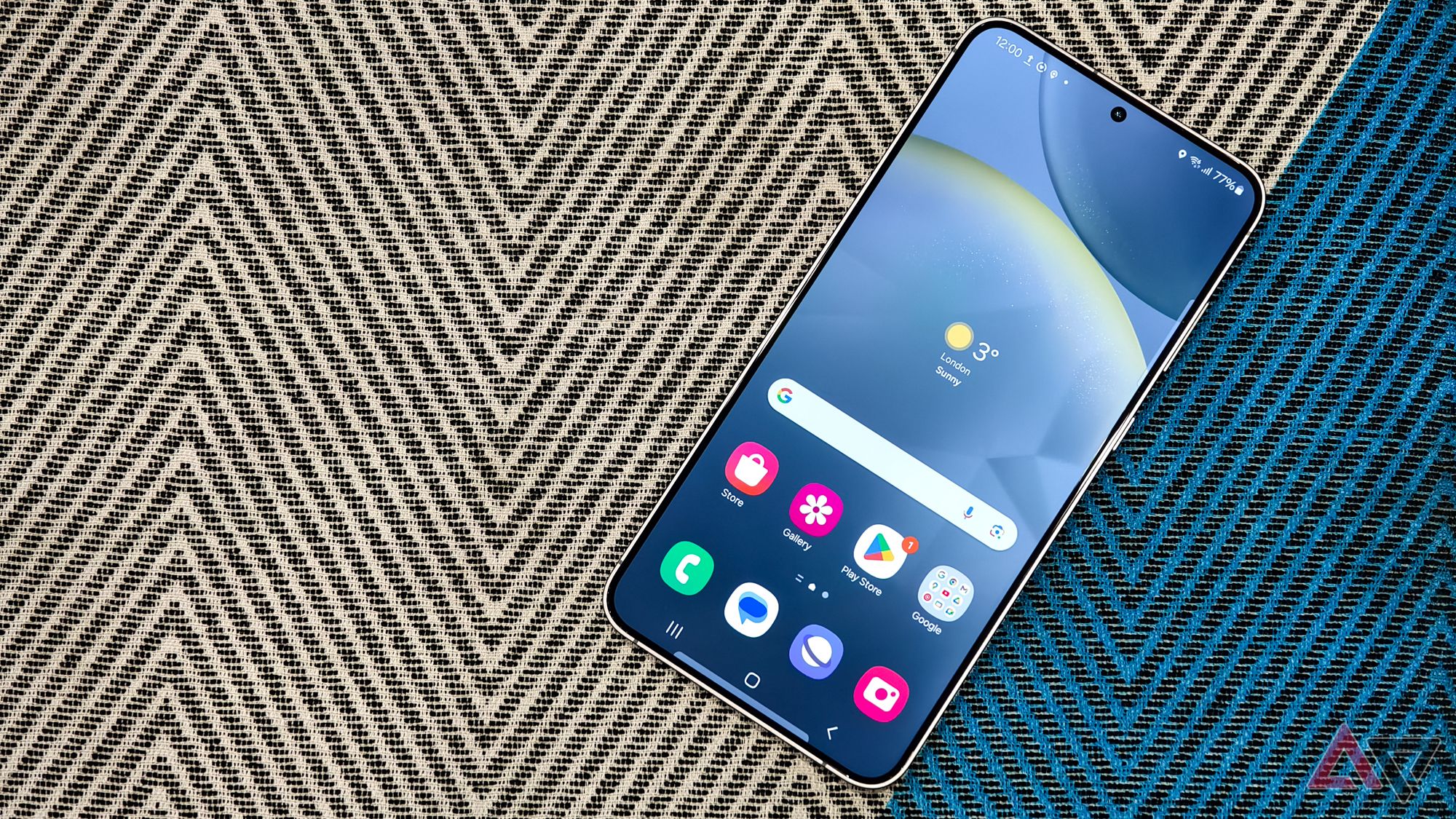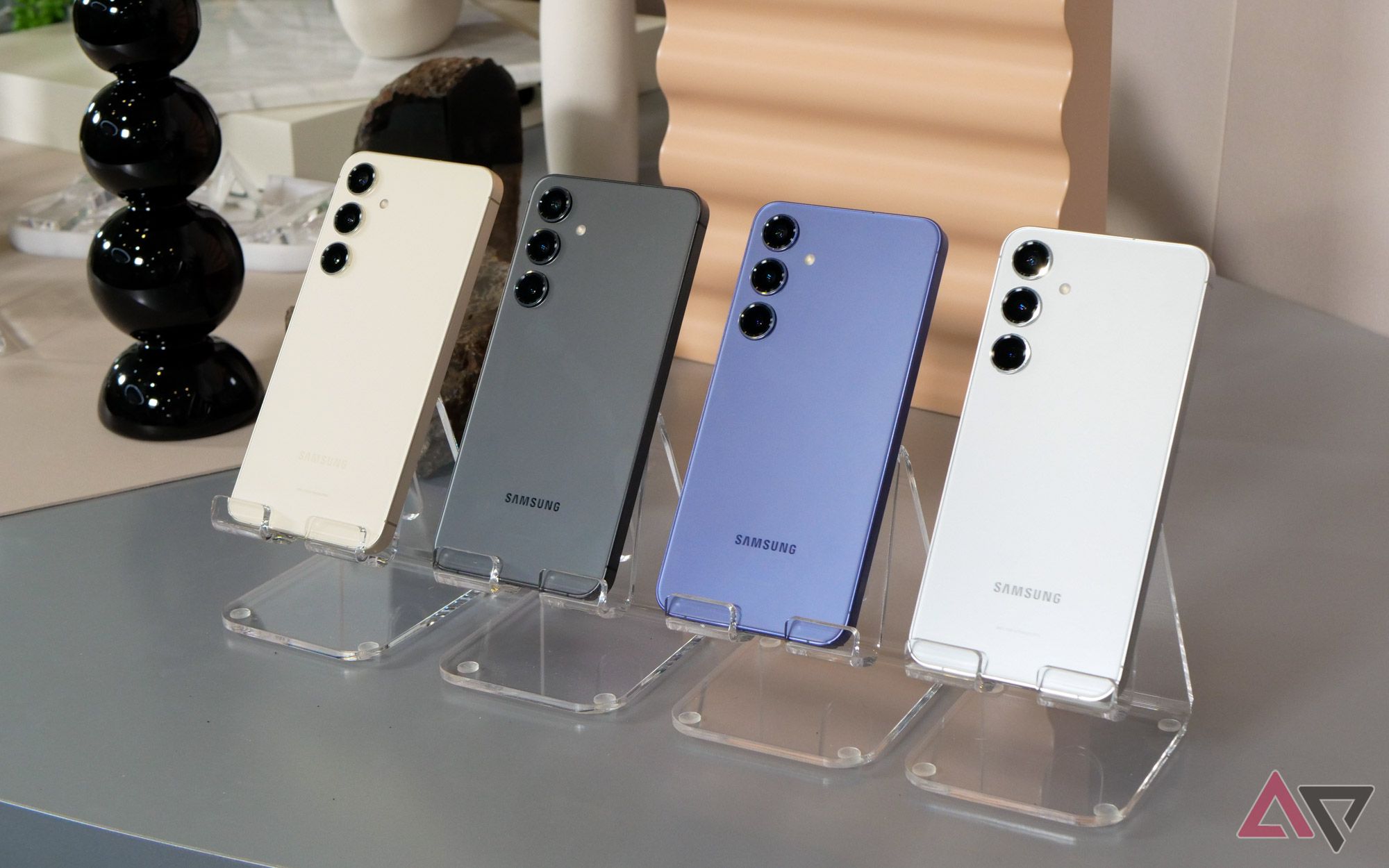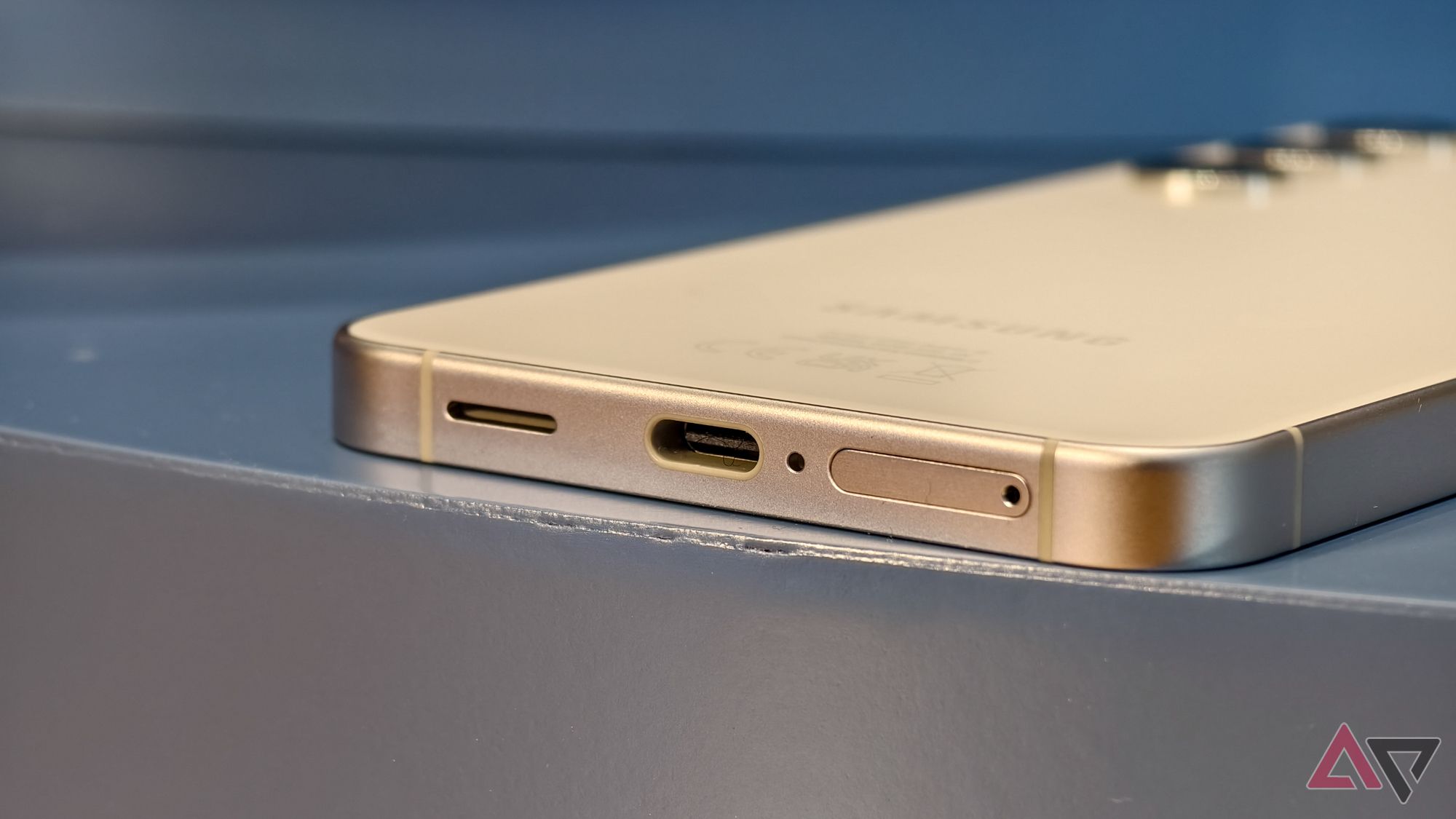-
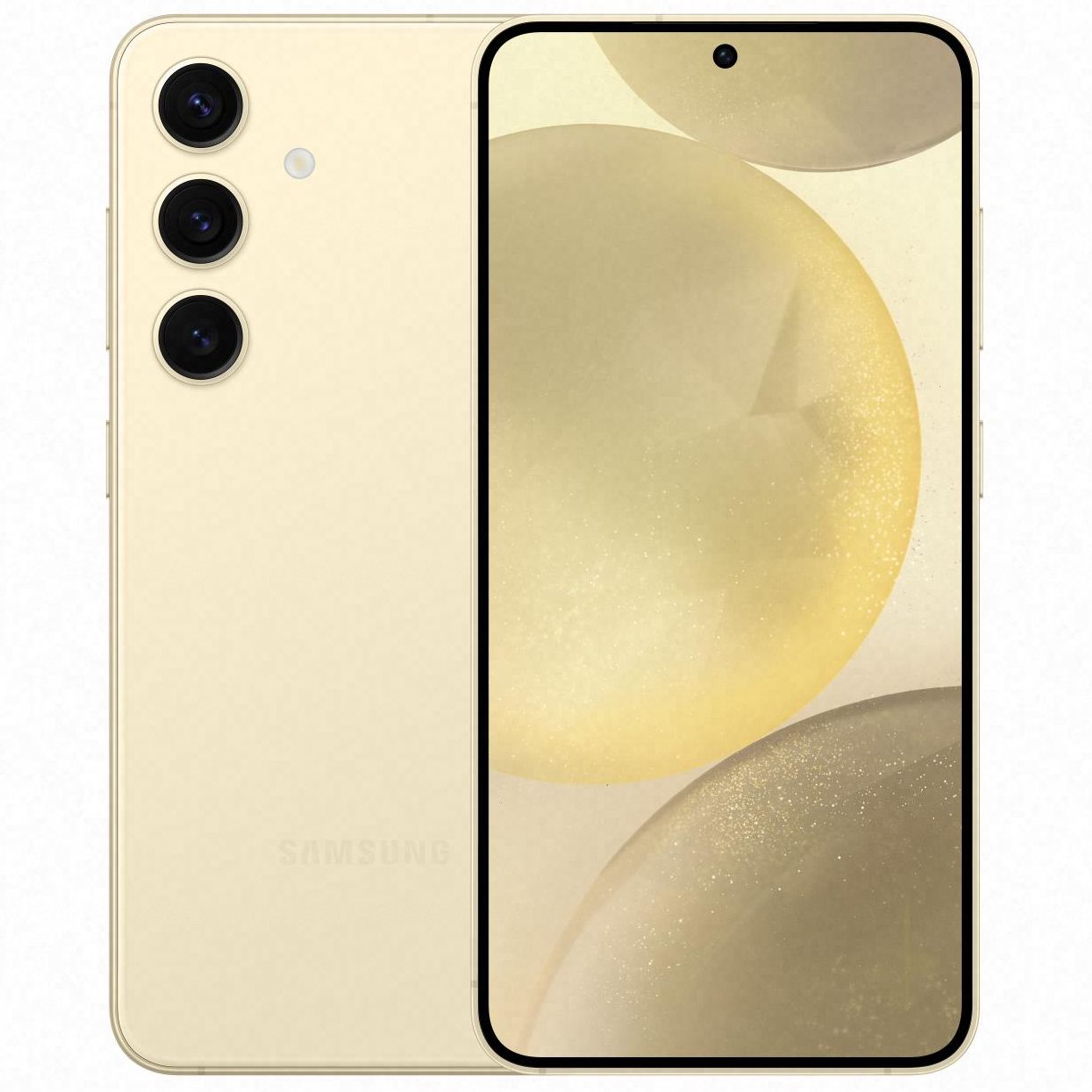
Samsung Galaxy S24
Small, light, and powerful
The 2024 version of one of the market’s smallest flagships once again looks and feels great. It offers only minor upgrades to its predecessor, but the new SoC, bigger battery, brighter screen, and improved AI features will definitely make a difference.
Pros- Still just as compact
- Easier to use in bright sunlight
- Now with a full 1 to 120Hz refresh rate range
Cons- No groundbreaking hardware improvements
- Only charges at 25W
-
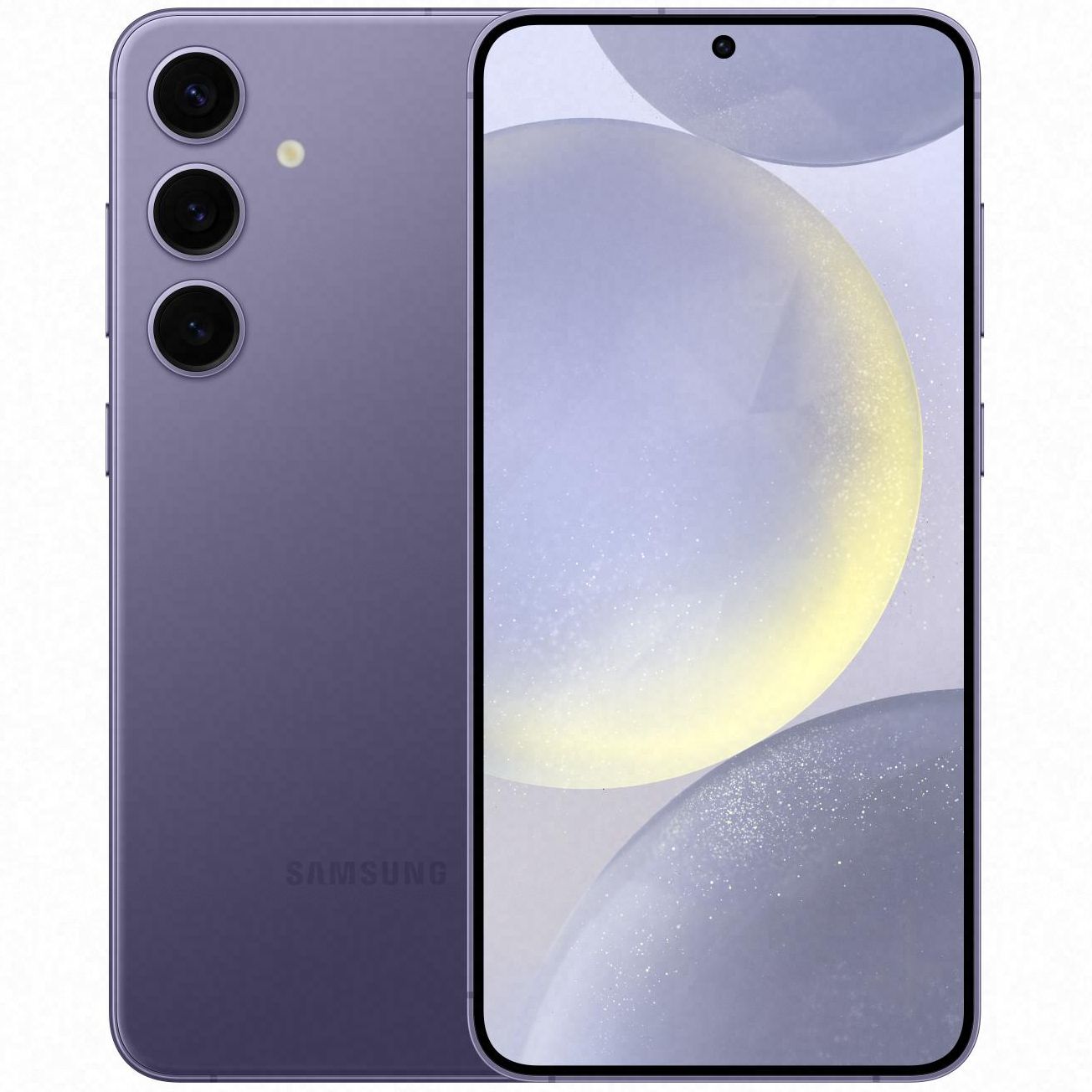
Samsung Galaxy S24+
Even more refined
The perfect-sized phone for most people, the Galaxy S24+ lets you take full advantage of its big display with smaller bezels, an increased resolution, and up to a whopping 2,600 nits of brightness. While it’s not an overhaul in any meaningful way, it’s poised to be one of the most popular flagships in the coming months.
Pros- Squared-off edges make it easier to hold
- Returns to a QHD+ resolution
- Equipped with some impressive AI features
Cons- Still limited to 3× optical zoom
- Retains the 45W charging speed
As high-end smartphone hardware continues to plateau, manufacturers look to branch out and make their flagship devices stand out for increasingly novel reasons. As one of the most purely iterative generational upgrades we’ve ever seen, the S24 series can’t really find any ground to break in terms of common use cases. So, while it’s a little late to the party that Google started with the Pixel, Samsung’s leaning into its new machine learning features instead this year.
Compared to the S23 family, the S24 slabs see a performance boost, some flattened curves, and slightly larger batteries, but not much distinguishes the new set from the old. Between the small and intermediate-size options, the main difference is as apparent as always — it’s hard to miss that the S24+ is notably larger — but under the hood, these two phones are practically identical.
Price, availability, and specs
Samsung announced the new flagship stable during the Galaxy Unpacked event on January 17, 2023, with a launch date of January 31. The S24 starts at $800 for 128GB of storage, tacking on $60 for the 256GB model. Its larger relative costs an entire $1,000 for 256GB of storage, and $120 more for 512GB.
If you hustle and reserve yours during the preorder period, you can immediately score a deal on both the S24 and S24+, as Samsung offers each with an upgrade to the higher-capacity model at no charge. You’ll also receive a $75 Samsung Credit usable towards Samsung’s various first-party electronic gadgets, which is enough to net you a free pair of Galaxy Buds FE at the moment.
-
Samsung Galaxy S24 Samsung Galaxy S24+ SoC (US), Exynos 2400 (worldwide) Qualcomm Snapdragon 8 Gen 3 for Galaxy RAM 8GB 12GB Storage 128GB or 256GB 256GB or 512GB Battery 4,000mAh 4,900mAh Operating System Android 14 and One UI 6.1 Android 14 and One UI 6.1 Front camera 12MP, f/2.2 12MP, f/2.2 Rear camera 50MP, f/1.8 OIS main; 12MP, f/2.2 ultrawide; 10MP, f/2.4, 3x telephoto 50MP, f/1.8 OIS main; 12MP, f/2.2 ultrawide; 10MP, f/2.4 telephoto (3× zoom) Dimensions 147.1 x 70.6 x 7.6mm 158.5 × 76.2 × 7.6mm Display type AMOLED, 1-120Hz AMOLED, 1-120Hz Weight 168g 197g Charge speed 25W wired, 15W wireless 45W wired, 15W wireless IP Rating IP68 IP68 Display dimensions 6.2″ 6.7″ Cellular connectivity 4G LTE, 5G (sub-6 and mmWave) 4G LTE, 5G (sub-6 and mmWave) Wi-Fi connectivity Wi-Fi 6E, Wi-Fi Direct Wi-Fi 7, Wi-Fi Direct Bluetooth Bluetooth 5.3 Bluetooth 5.3 Connectivity NFC NFC, UWB Colors Onyx Black, Marble Gray, Cobalt Violet, Amber Yellow, Jade Green, Sapphire Blue, and Sandstone Orange Onyx Black, Marble Gray, Cobalt Violet, Amber Yellow, Jade Green, Sapphire Blue, and Sandstone Orange Display resolution 2340 × 1080 3120 × 1440 SIM support Dual SIM (Nano SIM and eSIM) Nano-SIM and eSIM
Design
A race to simplicity
These two phones don’t just look great; they also feel more premium in the hand than any previous models, which is a decent accomplishment. They’re as stark as stark can get, and frequently see comparisons to the iPhone for their minimalist design. The only major difference is the obvious one: the S24+ is bigger, with an extra half-inch diagonally, and therefore offers more utility than the S24, at the expense of usability for people with small hands.
That’s not to say the S24+ is unwieldy by any means, as user feedback and overall demand indicates its size is perfect for most people. While small-phone enthusiasts such as myself might be dismayed by today’s lack of truly compact flagship smartphones (RIP Sony Xperia XZ1 Compact), the simple fact of the matter is that not enough people bouth them to ensure their continued existence. With that in mind, the S24 might not be tiny, but it’s arguably the best small phone today, with the Asus Zenfone 10 also in the running.
Also worth noting is Samsung apparently giving up of the ghost as far as its formerly innovative curved designs go. What was once a noteworthy feature has now been abandoned, as any semblance of curved edges disappears from these high-end devices, compared to the subtly rounded form of the S23 series. While they looked and felt fine, they didn’t help with precision touchscreen use, and the newest S series phones are decidedly more angular, for the better.
Display
The biggest difference
Samsung’s 2023 flagships touted some of the best display tech we’ve ever seen, and Samsung improved on its industry-leading screens at least a little this time around. In a bit of a recurring theme, the S24 and S24+ only differ here in two key metrics: size and resolution. Both can reach an astonishing 2,600 nits, good enough for easy visibility on the brightest days. And they’re each just a hair larger than before, increasing the screen-to-body ratio, thanks in large part to the aforementioned removal of the rounded edges.
The S24+ does garner a win here, as it’s finally graduated to the QHD+ resolution that we haven’t seen in this model since before the S21 family. Its 3120 × 1440 panel results in a 513ppi pixel density, just about the best in the world. No human on earth will be able to pick out individual pixels at standard viewing distances with the naked eye, which definitely qualifies it as one of the most crisp screens in existence. But that’s no insult to the smaller version, whose 416ppi density is right about on-par in terms of real-world clarity.
Any criticisms of either screen are negligible. The only one even worth mentioning is the lack of Dolby Vision support, which simply means you won’t get cinema-quality dynamic contrast when viewing a specific list of Dolby-encoded content on your sub-7-inch screen. While it’s technically a drawback, we don’t think it’s actually a very big deal.
Software
A pair of winners
We could go on and on here about why people like the One UI interface so much, but we already spend a lot of time on that. Suffice to say it’s intuitive, straightforward, and highly customizable. The S24+ does make a little better use of said interface, though, as its larger size makes multitasking a little easier.
The real software upside here is Samsung’s new promise of seven years of Android updates to its flagship devices, bringing it inline with Google’s somewhat unexpected guarantee for the Pixel 8 series. Especially considering how powerful the phones’ hardware is, this absolutely means they’ll both remain useful for many years, making them great investments right now.
There is, actually, one additional usability win here for the S24+. The two share nearly identical hardware, but only the larger one has Ultra Wideband connectivity enabled. UWB isn’t exactly mainstream yet, with Samsung’s tracking tags and a few types of automotive remote start systems among the few popular applications. But, given the devices’ android longevity, opting for the S24+ gives you the option to utilize this upstart technology, when it inevitably becomes more widespread (hopefully, in the way that NFC never quite did, outside of tap-to-pay functionality).
Samsung vs. Google on the AI front
Machine learning-based features (I still refuse to call them AI, because they’re not) represent the biggest software advancement with the new Galaxy phones. At the moment, we’re still getting familiar with Samsung’s latest innovations, but we’re already aware of the Galaxies’ voice recording superiority, and wouldn’t be surprised if Samsung does at least as good a job with the rest of the tools as Google has.
Interestingly, they might not all be so different under the hood, as the S24 series does implement some of Google’s tech. Given the impressive SoC performance and long Android update lifespan of the S24 family, there’s a lot of promise for the future in terms of upcoming “AI” features, and we’re excited to see them evolve.
Performance
Serious power users want the S24+
Qualcomm’s third-generation Snapdragon 8 SoC sees a modest increase in clock speed, as well as an improved instruction set that might marginally increase efficiency, but won’t be super noticeable in day-to-day use. The Galaxy S24 family gets a slightly upgraded ‘for Galaxy’ version of that chipset, just like the S23 offerings did.
Only Apple’s A17 Pro really competes with this, and only in a few types of benchmarks;the Qualcomm performs less well in some single-core measurements, but absolutely excels in the more complex multi-core benchmarks that better represent most real-world usage. In reality, these kinds of comparisons are somewhat negligible for the average consumer, as Apple, Qualcomm, and even MediaTek do great jobs at delivering blazing-fast real-world performance at the top of the line.
But the S24+ does boast an additional 4GB of RAM, defaulting to 12GB instead of 8GB, something the most demanding mobile users will appreciate. It won’t make difference in the average app, but if you plan on running something highly resource intensive (for example, one of the up-and-coming large language models that operates mostly or entirely on your mobile device), that extra system memory will get you faster results. This doesn’t apply to most users, of course, but only early adopters and the most demanding of enthusiasts.
Dear Samsung: please fix Exynos
We’re still in the throes of our in-depth reviews of these phones, but one thing continues to stand out for European fans of the S24 series. Samsung has, once again, opted to use its in-house Exynos chipset (this time, the 2400) in the S24 and S24+ in Europe (the S24 Ultra gets the Qualcomm chipset in every market). It’s not a terrible SoC, but it’s not as fast or efficient as the Snapdragon the rest of the world gets. While we expect it to run a little hotter and run down the battery a little faster, there’s a chance it’ll be less buggy than Exynos chipsets of years past. If you’re able, though, we recommend avoiding the Exynos-equipped versions.
Battery life
Not the absolute best, but still good
Where the S22s faltered, the S23s did just fine. In fact, the S23+ made our list of the best phones for battery life, not because it lasts longer than all the rest, but because it’s a fantastic device with an above-average and therefore entirely useful (and easily all-day) battery life.
Once again, we’ll chime in a little later once we have some long-term results here, but we expect to see even better battery performance from the 2024 versions. They received a 100 and 200mAh increase in capacity, respectively, which should work well with the enhanced SoC to provide longer use times between charges. Given the S24+’s resolution increase, its larger battery will likely perform very similarly to the smaller, lower-resolution S24’s.
Speaking of charges: we criticized Samsung last year for giving us mere 25W charging in the S23 and 45W in the S23+, and nothing’s changed there. We still wonder why it can’t be bothered to offer anything faster in these ~$1,000, top-of-the-line phones, but this does prove another pretty big win for the larger S24+. If you use your phone a lot, and like to run resource-intensive apps, the S24+’s faster charging will definitely suit you. Both phones also allow for 15W wireless charging, as well as 4.5W reverse wireless charging.
Cameras
Better, but not because of hardware
The actual physical camera configuration has never been Samsung’s weakness. Its lens array remains up there with the best, with both the small and medium-size S24 models capturing 50MP images, pixel-binned to 12.5MP as default. In this and all other hardware-related aspects, the S24 and S24+ remain identical to their predecessors, which isn’t really a bad thing.
The upside to the S24 and S24+ camera array comes alongside the previously mentioned machine learning-based features. The less-intensive tools, almost certainly including the photo- and video-editing capabilities, will operate entirely on the device, while more demanding features will require the use of Samsung’s cloud hardware.
Somewhat unexpectedly, this will eventually result in subscription charges for some AI features on the Galaxy series. While that’s never heartwarming news, it’s not ridiculous for Samsung to require compensation for using its own supercomputers down the line. At least it’s offering to provide those features for free all the way through 2025.
Which is right for you?
Most people will prefer the S24+ simply because it offers more screen space and will perform slightly better over its long software lifespan, due to the extra RAM and faster charging. However, this is one of those decisions that’s based on your use case. If you almost always use your phone with one hand, the smaller one might well lead to less frustration. But if you like to watch video, play games, and video call friends and family a lot, you’ll get more out of the bigger one. We think most people fall into that latter camp, but you really can’t go wrong with either of these flagships.

Samsung Galaxy S24+
Now featuring AI
With an even brighter screen that’s easier to use
Arguably the perfect size, the Samsung Galaxy S24+, and its seven-year Android update guarantee make it one of the best possible smartphone investments today.
But the reality is that these two phones are practically identical. The only real differences are screen size, resolution, RAM, charging, and UWB connectivity. If those (relatively minor) exclusions don’t bother you, or if — like me — you have trouble stretching your thumb all the way up to the notification bar during one-handed use, the base model Galaxy S24 is an absolutely fine choice that you’ll enjoy using for years.

Samsung Galaxy S24
Small and bright
Still a compact flagship winner
The same in almost every way as its slightly larger sibling, the Galaxy S24 delivers peak minimalist design, powerful hardware, and an impressive (and evolving) set of AI features sure to make your life easier for years.
Source link

